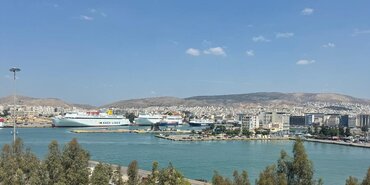Rule 10 and debt collection
We have recently seen some high profile insolvency cases such as the South Korean container line Hanjin Shipping Co Ltd. Hanjin was, at the time of their collapse, the seventh largest container carrier in the world.
This particular company’s demise caught many people off guard as one of their rivals was widely considered by many to be more likely to go under. However, they are still currently trading.
When a company finds itself in this predicament (essentially, being unable to pay its debts as they fall due) it has the option of applying to the courts to commence insolvency proceedings. There are many types of insolvency proceeding and in Hanjin’s case, the company’s administrators believed that creditors would be better served by trying to continue the company as an ongoing business. This is called Rehabilitation.
Korean Rehabilitation proceedings (similar to “Administration” in the UK, “Chapter 11” in the US and “Judicial Management” in Singapore) work on the basis that the creditors will recover a larger percentage of the sum they are owed if the business is allowed to carry on trading. The creditors will be paid out of future earnings either in cash or in equities (or a combination of the two). The company is then protected by the courts from claims brought by their creditors in relation to debts incurred prior to the official Rehabilitation scheme. In February 2017, it appeared that the debts owed by Hanjin were too high to allow them to carry on trading. A judge in South Korea therefore decided that liquidation would bring more value to creditors than rehabilitation of the company. Hanjin will now be liquidated. At the time of writing this article we have heard that non-secured creditors are likely to receive less than 2% of their debt.
In previous Korean Rehabilitation proceedings, it took the administrators some time to have the Korean proceedings recognised in other jurisdictions. This gap allowed the Club (and other entities) to try and arrest vessels (or other assets) in those other jurisdictions. However, in the case of Hanjin, the Korean insolvency proceedings were recognised in most of the world’s major jurisdictions almost instantly. This meant that in a debt collection capacity, it was much harder for us to take any action.
The main types of debt that we see from our members in these types of insolvency are:
(a) Port Agents: Port agents can have numerous types of debt. They will of course have their own agency fees. Secondly, they may have appointed various service providers on behalf of their principal. Whilst most appointments should be made “as agent only” we understand that occasionally the agent may have no choice but to contract with suppliers in their own name and are therefore liable to pay them directly. In some circumstances, suppliers will try and obtain payment directly from the agent even where the agent has made it clear they are appointing the supplier “as agents only”. Port costs can be problematical because many ports insist that port agents provide a guarantee in respect of any outstanding port costs as a prerequisite of granting a licence to operate in the port. Finally, depending on the jurisdiction, the port agent may have a statutory liability in respect of certain claims relating to cargo, customs penalties, oil pollution or crew claims.
(b) Freight Forwarders: The forwarder essentially contracts with the shipper to carry their goods from A to B. If the forwarder placed those goods on a Hanjin vessel, there are various claims they might see arising from the following circumstances; delays caused by Hanjin vessels being arrested or excluded from ports. and ports not allowing Hanjin containers into the port. In other cases, the forwarder may have paid Hanjin the freight to carry the goods, but then find themselves having to pay another carrier to actually perform the carriage.
What can you do to avoid or minimise such debts?
(a) Do not contract with companies that you know (or ought to know) are in financial difficulty. Rumours are usually around in the market for a period before a collapse. For example, if you have had trouble in the past getting paid by a company or are already owed significant sums of money by a company avoid doing business with them where possible. You should bear in mind that your debt collection cover is based on you;
- Taking reasonable steps to establish the financial standing of your customer;
- Not providing credit to companies unless the Club agrees that it was reasonable to do so; and
- Taking reasonable steps to secure payment in advance or appropriate security.
(b) Do try to invoice for smaller sums more often, rather than produce one big invoice at the end. We do appreciate this is not always possible.
(c) Do tell the ITIC as quickly as possible if you are owed money by any entity that enters insolvency proceedings. Whilst it is rare to recover debts from such an entity, the first few days are usually where any windows to try and arrest vessels will exist.
(d) Do provide all your invoices to ITIC in good order and with all supporting documents attached.
- Date
- 27/03/2017





